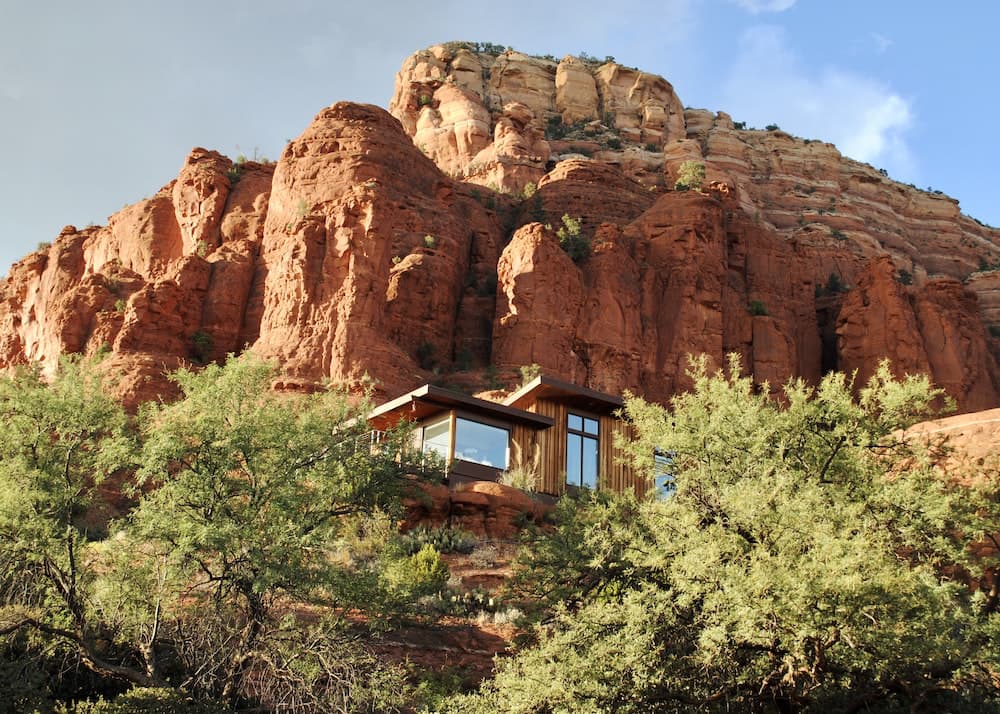When you think of Arizona, what probably comes to mind are vast deserts, towering saguaro cacti, and picturesque sunsets. But beyond its natural beauty, Arizona boasts a rich architectural heritage deeply influenced by Spanish colonial design.
One of the most striking aspects of this influence is its impact on the interior spaces of homes and buildings across the state. In this article, we’ll take a casual yet informative journey through time to explore how Spanish colonial design, known for its distinctive use of glass doors and windows, has left an indelible mark on the interiors of Arizona’s structures.
A Blend of History and Culture
To understand the influence of Spanish colonial design on Arizona’s interior spaces, it’s essential to delve into the historical and cultural context. Arizona was part of the vast region once known as New Spain, a Spanish colonial territory that stretched across much of the Americas for several centuries.
The Spanish colonizers brought their architectural traditions, merging European styles with indigenous influences. This fusion of cultures resulted in a unique architectural aesthetic that is now synonymous with the American Southwest. One hallmark of Spanish colonial design is glass doors and windows.
Letting in the Arizona Sunshine
The desert landscape of Arizona is defined by its abundant sunshine, and Spanish colonial design cleverly incorporates this natural resource into its interior spaces. The use of large glass doors and windows is a defining feature of this architectural style.
These elements serve a dual purpose: they allow abundant natural light to flood the rooms and provide breathtaking views of the surrounding landscape.
“bringing the outdoors in” is at the heart of Spanish colonial interior design. It seamlessly transitions between the interior and exterior spaces, connecting residents with the stunning desert vistas and temperate climate. The ample use of glass doors and windows encourages a sense of openness, airiness, and appreciation for Arizona’s scenic beauty.
Courtyards and Patios
One of Arizona’s most iconic elements of Spanish colonial design is the central courtyard or patio. These outdoor spaces are often enclosed by the structure or surrounded by thick adobe walls, ensuring privacy and providing a sheltered oasis from the desert heat. Glass doors. Windows are crucial in connecting these courtyards to the interior of homes and buildings.
Typically, homes designed in this style have rooms that open directly onto the central courtyard. These rooms feature large glass doors that can be flung open to blur the line between indoor and outdoor living. This design allows for easy access to the courtyard and invites the refreshing breezes and the scent of desert flora inside, creating a harmonious and comfortable living environment.
Incorporating Nature’s Palette
Spanish colonial design embraces the colors and textures of the natural world, and this philosophy extends to interior spaces. Earthy tones such as terracotta, rich browns, and warm yellows dominate the color palette, reflecting the hues of the surrounding desert landscape. This color scheme evokes a sense of warmth and coziness, counterbalancing the harsh desert environment outside.
Many Spanish colonial interiors feature handcrafted wooden furniture and rustic decor elements to enhance this connection to nature. Wooden beams and vigas (wooden ceiling beams) are often exposed to add depth and character to the space. These elements, along with the use of glass doors and windows, create an atmosphere that is inviting and grounded in the natural beauty of Arizona.
Modern Interpretations
While the influence of Spanish colonial design on Arizona’s interior spaces is undeniable, it has also evolved to meet the demands of contemporary living. Today, architects and interior designers often blend traditional elements with modern sensibilities, creating spaces that pay homage to the past while embracing the present.
For instance, modern homes in Arizona may incorporate energy-efficient glass doors and windows that help to manage the desert’s extreme temperatures. These innovations maintain the connection with the outdoors while providing comfort and sustainability.
Furthermore, Spanish colonial design principles have influenced various architectural styles across the state, including Southwestern, Mediterranean, and even modernist aesthetics. These diverse interpretations continue to shape the interior spaces of Arizona, offering homeowners a range of options to express their style while staying rooted in the region’s architectural heritage.
Conclusion
The influence of Spanish colonial design on Arizona’s interior spaces speaks to the lasting impact of architecture in reflecting culture, history, and environment. This style seamlessly connects the stunning desert landscapes with Arizona’s homes and buildings by embracing glass doors and windows, creating a unique atmosphere.
Dominius, a glass door company in Norway, understands the importance of blending indoor and outdoor living spaces. Their commitment to quality glass doors and windows aligns perfectly with the principles of Spanish colonial design, enhancing the beauty of Arizona’s architecture.
Looking ahead, it’s evident that this architectural style will continue to shape and inspire interior spaces throughout the state. It celebrates the American Southwest’s rich history and the region’s natural beauty with the support of companies like Dominius, dedicated to delivering exceptional glass solutions.
